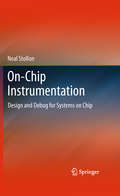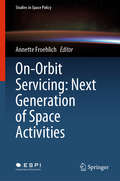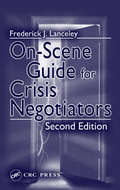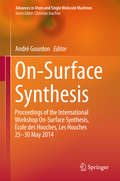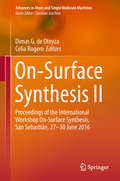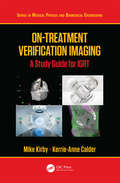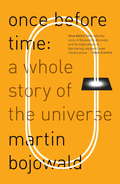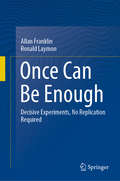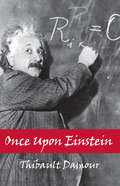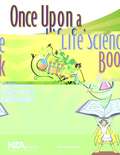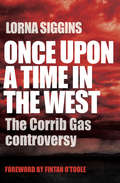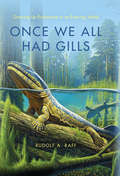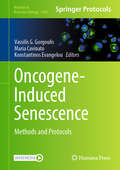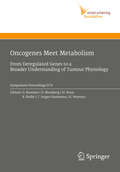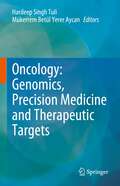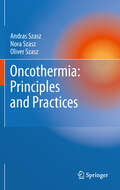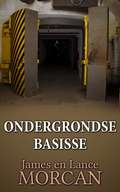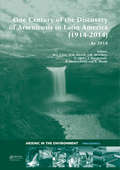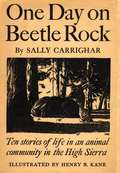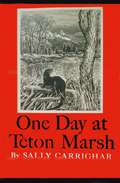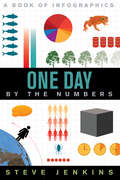- Table View
- List View
On-Chip Instrumentation
by Neal StollonThis book provides an in-depth overview of on chip instrumentation technologies and various approaches taken in adding instrumentation to System on Chip (ASIC, ASSP, FPGA, etc.) design that are collectively becoming known as Design for Debug (DfD). On chip instruments are hardware based blocks that are added to a design for the specific purpose and improving the visibility of internal or embedded portions of the design (specific instruction flow in a processor, bus transaction in an on chip bus as examples) to improve the analysis or optimization capabilities for a SoC. DfD is the methodology and infrastructure that surrounds the instrumentation. Coverage includes specific design examples and discussion of implementations and DfD tradeoffs in a decision to design or select instrumentation or SoC that include instrumentation. Although the focus will be on hardware implementations, software and tools will be discussed in some detail.
On-Orbit Servicing: Next Generation of Space Activities (Studies in Space Policy #26)
by Annette FroehlichThis book shares a range of new and diverse insights on On-Orbit Servicing (OOS), and examines its implications especially from political, legal, economic, and security perspectives. OSS has been evolving rapidly and presents both challenges and opportunities, such as in-space repairs, refuelling, refurbishment of spacecraft and servicing satellites, which could play a critical role in extending satellite lifecycles, while also representing a valuable next step in debris mitigation. At the same time, many legal questions have arisen in connection with OOS: the need to prevent hostile actions under the pretext of OSS; the distinction between governmental and non-governmental OOS operators; the status of re-worked and recycled space objects; the issue of control in terms of operations performed in orbit, i.e., in the international sphere; the status of objects manufactured in orbit and applicable law, including liability and registration; and the impacts on insurance law and risk management. Finally, the book examines the implications of OOS for emerging space actors in the Global South, and recommends a paradigm shift to help developing countries fully recognise the necessity and urgency of being involved in discussions on OSS, as opposed to leaving it up to the developed space actors. This book will be of great interest to practitioners, academics, and students working in the space sector and related fields.
On-Scene Guide for Crisis Negotiators
by Frederick J. Lanceley William R. CrandallAccording to author Frederick J. Lanceley one of the world's foremost crisis negotiation authorities negotiators must train and train regularly. For just as the legal field constantly evolves, so does the field of crisis negotiation. The new edition of On-Scene Guide for Crisis Negotiators reflects this fact. A bestseller in its first edition, this
On-Surface Synthesis
by André GourdonWith contributions by leading international experts, this book presents a detailed compilation of a new and very active field. It is the first book devoted to the covalent coupling of molecular precursors on surfaces that allows the preparation of 0D, 1D and 2D molecules that cannot be synthesized in solution. This book is aimed at students and researchers interested in nanochemistry and molecular devices and it gives the reader a pedagogical up-to-date vision of the most recent developments. The editor ensures a multidisciplinary approach involving molecular chemistry, surface sciences, surface spectroscopies, theory, scanning tunneling and non-contact atomic force microscopies.
On-Surface Synthesis II: Proceedings Of The International Workshop On-surface Synthesis, San Sebastián, 27-30 June 2016 (Advances In Atom And Single Molecule Machines Ser.)
by Dimas G. de Oteyza Celia RogeroOn-surface synthesis is appearing as an extremely promising strategy to create organic nanoarchitectures with atomic precision. Molecular building blocks holding adequate functional groups are dosed onto surfaces that support or even drive their covalent linkage. The surface confinement and the frequent lack of solvents (most commonly being performed under vacuum conditions) create a completely new scenario fully complementary to conventional chemistry. In a pedagogical way and based on the most recent developments, this volume presents our current understanding in the field, addressing fundamental reaction mechanisms, synthetic strategies to influence the reactions according to our needs, as well as the ultimate growth and characterization of functional materials.Verging on chemistry, physics and materials science, the book is aimed at students and researchers interested in nanochemistry, surface science, supramolecular materials and molecular devices.Chapters "Mechanistic insights into surface-supported chemical reactions", "Reactivity on and of Graphene Layers: Scanning Probe Microscopy Reviels" and "Bottom-up fabrication of atomically precise graphene nanoribbons" of this book are available open access under a CC BY 4.0 license at link.springer.com
On-Treatment Verification Imaging: A Study Guide for IGRT (Series in Medical Physics and Biomedical Engineering)
by Mike Kirby Kerrie-Anne CalderOn-treatment verification imaging has developed rapidly in recent years and is now at the heart of image-guided radiation therapy (IGRT) and all aspects of radiotherapy planning and treatment delivery. This is the first book dedicated to just this important topic, which is written in an accessible manner for undergraduate and graduate therapeutic radiography (radiation therapist) students and trainee medical physicists and clinicians. The later sections of the book will also help established medical physicists, therapeutic radiographers, and radiation therapists familiarise themselves with developing and cutting-edge techniques in IGRT. Features: Clinically focused and internationally applicable; covering a wide range of topics related to on-treatment verification imaging for the study of IGRT Accompanied by a library of electronic teaching and assessment resources for further learning and understanding Authored by experts in the field with over 18 years’ experience of pioneering the original forms of on-treatment verification imaging in radiotherapy (electronic portal imaging) in clinical practice, as well as substantial experience of teaching the techniques to trainees
Once Before Time: A Whole Story of the Universe
by Martin BojowaldBojowald recounts his discovery of loop quantum cosmology (LQC) and explains how it can illuminate the very birth of the universe.
Once Can Be Enough: Decisive Experiments, No Replication Required
by Allan Franklin Ronald LaymonThere has recently been considerable discussion of a “replication crisis” in some areas of science. In this book, the authors argue that replication is not a necessary criterion for the validation of a scientific experiment. Five episodes from physics and genetics are used to substantiate this thesis: the Meselson-Stahl experiment on DNA replication, the discoveries of the positron and the omega minus hyperon, Mendel’s plant experiments, and the discovery of parity nonconservation. Two cases in which once wasn’t enough are also discussed, the nondiscovery of parity nonconservation and the search for magnetic monopoles. Reasons why once wasn’t enough are also discussed.
Once Upon A Starry Night: A Book Of Constellations
by Jacqueline Mitton Christina BalitNational Geographic’s stunning rendition of the constellations’ glittering lightshow is now available in paperback. Take an illuminating ride through the starry night sky, and learn how the heavens pay tribute to the gods of Greek and Roman mythology. Once Upon a Starry Night explains the ten ancient figures whose legends are written large across the universe. Every page shines with Christina Balit’s vibrant art, studded with shiny stars, and provides the perfect backdrop to Jacqueline Mitton’s poetic text.
Once Upon Einstein
by Thibault DamourIt is well known that Einstein founded twentieth-century physics with his work on relativity and quanta, but what do we really know about these ground breaking ideas? How were they discovered? What should we retain today from the conceptual upheavals he initiated? Through a selection of concrete scenes taken from Einstein's life, the author offers
Once Upon a Life Science Book: 12 Interdisciplinary Activities to Create Confident Readers
by Jodi Wheeler-ToppenWheeler-Toppen, a science teacher and children's author, presents 12 inquiry-based classroom lessons to help middle school teachers improve students' reading abilities and teach science content at the same time. Each lesson consists of a science activity, a reading about an important life science concept (easier to follow than those typically found in textbooks), an application that asks students to connect the activity with what they read, and a reading comprehension exercise, such as previewing illustrations, identifying text structures, and context clues to the meanings of new words. Each lesson also includes a graphic organizer and a writing activity. Six of the lessons ask students to make a claim and support it with evidence, and an introductory chapter suggests activities to help students understand claims and evidence.
Once Upon a Time I Lived on Mars: Space, Exploration, and Life on Earth
by Kate GreeneWhen it comes to Mars, the focus is often on how to get there: the rockets, the engines, the fuel. But upon arrival, what will it actually be like?In 2013, Kate Greene moved to Mars. That is, along with five fellow crew members, she embarked on NASA’s first HI-SEAS mission, a simulated Martian environment located on the slopes of Mauna Loa in Hawai'i. For four months she lived, worked, and slept in an isolated geodesic dome, conducting a sleep study on her crew mates and gaining incredible insight into human behavior in tight quarters, as well as the nature of boredom, dreams, and isolation that arise amidst the promise of scientific progress and glory.In Once Upon a Time I Lived on Mars, Greene draws on her experience to contemplate humanity’s broader impulse to explore. The result is a twined story of space and life, of the standard, able-bodied astronaut and Greene’s brother’s disability, of the lag time of interplanetary correspondences and the challenges of a long-distance marriage, of freeze-dried egg powder and fresh pineapple, of departure and return. By asking what kind of wisdom humanity might take to Mars and elsewhere in the Universe, Greene has written a remarkable, wide-ranging examination of our time in space right now, as a pre-Mars species, poised on the edge, readying for launch.
Once Upon a Time in the West: The Corrib Gas Controversy
by Lorna Siggins'All I want is to stay where I am . . . My heart and soul are in this place.'(Willie Corduff, one of The Rossport Five)In a remote, beautiful part of the west of Ireland, a David and Goliath struggle rages between multinational oil company, Shell, and some of the local community of Rossport, County Mayo. In 1996, Enterprise Oil, subsequently bought by Shell, found a major source of valuable gas offshore in the Corrib gas field. In the attempt to build an onshore pipeline and refinery the oil giant has come into conflict with a small group of locals who, anxious about the safety of their families, the environmental impact of the project and the future of their community, are resisting Shell's plans. The eyes of the nation fell on this tiny community when, in 2005, five of the residents were jailed for refusing to allow Shell onto their land, in contempt of court orders. These men have become known as The Rossport Five.Irish Times correspondent Lorna Siggins has been covering the controversy from the beginning. No one is better placed to unravel the twists and turns of this fascinating human drama and its political, cultural and environmental shockwaves. In a new Ireland where economic logic goes largely unchallenged, the Corrib Gas pipeline controversy raises uncomfortable questions about the ways in which Ireland has changed.
Once We All Had Gills
by Rudolf A. RaffIn this book, Rudolf A. Raff reaches out to the scientifically queasy, using his life story and his growth as a scientist to illustrate why science matters, especially at a time when many Americans are both suspicious of science and hostile to scientific ways of thinking. Noting that science has too often been the object of controversy in school curriculums and debates on public policy issues ranging from energy and conservation to stem-cell research and climate change, Raff argues that when the public is confused or ill-informed, these issues tend to be decided on religious, economic, and political grounds that disregard the realities of the natural world. Speaking up for science and scientific literacy, Raff tells how and why he became an evolutionary biologist and describes some of the vibrant and living science of evolution. Once We All Had Gills is also the story of evolution writ large: its history, how it is studied, what it means, and why it has become a useful target in a cultural war against rational thought and the idea of a secular, religiously tolerant nation.
Once a Wolf: The Science Behind Our Dogs? Astonishing Genetic Evolution
by Bryan SykesThe author of Seven Daughters of Eve returns with a lively account of how all dogs are descended from a mere handful of wolves. How did wolves evolve into dogs? When did this happen, and what role did humans play? Oxford geneticist Bryan Sykes used the full array of modern technology to explore the canine genetic journey that likely began when a human child decided to adopt a wolf cub thousands of years ago. In the process, he discovered that only a handful of genes have created the huge range of shapes, sizes, and colors in modern dogs. Providing scientific insight into these adaptive stages, Sykes focuses attention on our own species, and how our own evolution from (perhaps equally aggressive) primates was enhanced by this most unlikely ally. Whether examining our obsession with canine purity, or delving into the prehistoric past to answer the most fundamental question of all, “Why do we love our dog so much?,” Once a Wolf is an engaging work no dog lover or ancestry aficionado should be without.
Oncogene-Induced Senescence: Methods and Protocols (Methods in Molecular Biology #2906)
by Vassilis G. Gorgoulis Maria Cavinato Konstantinos EvangelouThis volume explores a collection of the most recent experimental approaches for the detection, modelling, characterization, and in-depth computational analysis of the biological phenomenon known as Oncogene-Induced Senescence (OIS). The chapters in this book cover topics such as protocols to study OIS in two-dimensional, three-dimensional, and in vivo (animal and human) settings; analyzing OIS using high-throughput bioinformatics; and discriminate OIS from aging. Published in the highly successful Methods in Molecular Biology series format, chapters include introductions to their respective topics, lists of the necessary materials and reagents, step-by-step and readily reproducible laboratory protocols, and tips on troubleshooting to avoid known pitfalls.Comprehensive and authoritative, Oncogene-Induced Senescence: Methods and Protocols is a valuable resource for basic researchers and clinicians in the oncology field, and a great guide for computational scientists.
Oncogenes Meet Metabolism
by Guido Kroemer Dominik Mumberg Thomas Steger-Hartmann Björn Riefke Kirstin Petersen Kector KeunIn 1920s, Otto Warburg described the phenomenon of 'aerobic glycolysis', the ability of tumour cells to convert glucose to lactate in the presence of normal oxygen conditions. Warburg's hypothesis of an altered metabolism in cancer cells found no immediate acceptance, though it was latter confirmed for most human tumours. With the advent of molecular biology the focus in tumour research has shifted towards the search for oncogenes. However, the interest in cancer molecular profiling eventually led to a renaissance of the Warburg effect trying to combine genetic alterations with effects on metabolism with the help of modern analytic technologies to rapidly analyze broad varieties of metabolites in various tissues and bodyfluids (metabonomics).
Oncology: Genomics, Precision Medicine and Therapeutic Targets
by Hardeep Singh Tuli Mükerrem Betül Yerer AycanThis book describes translational cancer therapeutics and the way forward from clinical and molecular diagnosis to treatment. In addition, genomics alterations, microRNAs, and long non-coding RNAs translate precision medicine for the individualistic therapy of cancer patients. It describes the involvement of various pharmacogenetic factors in pharmacodynamic/pharmacokinetic (PD/PK) modulations of medicines. Indeed, the role of bioinformatics and biostatistics, considering the extensive data analysis serving precision medicine approaches, has also been entertained in the present book. Therefore, intended book demonstrates the successful medical evidence for the use of precision medicine in the treatment of cancer and its future clinical perspectives. It fills the gaps in cancer biology and precision medicine with its up-to-date content and well-designed chapters. It will serve as a valuable resource for science, medical students, and interdisciplinary researchers. It is a very welcome addition for the scientific community, research centers, and university-industry research collaborators to find out a complete capsular package about cancer drug targets, precision, and personalized medicine (including an introduction to cancer cell signaling, genomic alterations, miRNA targeting, pharmacogenetics, biomarkers, and metabolomics in precision medicine, etc.) at a single platform.
Oncothermia: Principles and Practices
by Andras Szasz Nora Szasz Oliver SzaszOncothermia is the next generation medical innovation that delivers selective, controlled and deep energy for cancer treatment. The basic principles for oncothermia stem from oncological hyperthermia, the oldest approach to treating cancer. Nevertheless, hyperthermia has been wrought with significant controversy, mostly stemming from shortcomings of controlled energy delivery. Oncothermia has been able to overcome these insufficiencies and prove to be a controlled, safe and efficacious treatment option. This book is the first attempt to elucidate the theory and practice of oncothermia, based on rigorous mathematical and biophysical analysis, not centered on the temperature increase. It is supported by numerous in-vitro and in-vivo findings and twenty years of clinical experience. This book will help scientists, researchers and medical practitioners in understanding the scientific and conceptual underpinnings of oncothermia and will add another valuable tool in the fight against cancer. Professor Andras Szasz is the inventor of oncothermia and the Head of St Istvan University's Biotechnics Department in Hungary. He has published over 300 papers and lectured at various universities around the world. Dr. Oliver Szasz is the managing director of Oncotherm, the global manufacturer and distributor of medical devices for cancer treatment used in Europe & Asia since the late 1980s. Dr. Nora Szasz is currently a management consultant in healthcare for McKinsey & Co.
Ondergrondse Basisse
by Elmarié Smal James Morcan Lance MorcanWat vang die wêreld se supermagte in hul geheime ondergrondse bunkers aan? Ondergrondse Basisse gee in die besonder bevestigde en gerugte ondergrondse fasiliteite in die Verenigde State en regoor die wêreld. Dit bevat seldsame fotografiese bewyse dwarsdeur sowel as minder bekende aanhalings uit sleutelregeringsfigure. Dit maak 'n dwingende saak dat daar 'n enorme verborge wêreld onder die Aarde se oppervlak bestaan. Die Morcans spekuleer dat die bedekte ondergrondse infrastruktuur veel groter kan wees as wat voorheen vermoed is en waarskynlik gebruik word vir die ontwikkeling van onderdrukte tegnologie. Hul bronne sluit in verwyderde lêers, universiteitsverslae, WikiLeaks se dokumente en onderhoude met oud-militêre personeel wat verklikkers geword het, wat beweer dat hulle in "stede onder die grond" gewerk het. Ondergrondse basisse lewer 'n wye verskeidenheid feite en teorieë wat uiteindelik lesers toelaat om hul eie gevolgtrekkings te vorm. Die onthulling dek alles van: die Amerikaanse Departement van Verdediging se bevestigde ontruimingsgebiede onder die Wit Huis en die Pentagon, sowel as hul erkende terreine by Mount Weather en Cheyenne Mountain; Ondergrondse fasiliteite regoor die wêreld, insluitend Rusland se uitgestrekte Mezhgorye-kompleks en Australië se CIA-bestuurde Pine Gap; Die langvergete koerantopskrifte wat berig het dat Adolf Hitler en senior SS-beamptes na die Tweede Wêreldoorlog 'n Nazi-kolonie onder Antarktika kon gebou het; Gerugte dat menslike-ruimtewesens gesamentlike ondernemings onder die grond plaasvind en dat ontvoerde burgers in ondergrondse gevangenisse aangehou word vir onwettige mediese eksperimente soos kloning. Waarom spandeer die Globale Adelikes triljoene dollars van hul swart begrotings om sulke groot netwerke van ondergrondse (en ondersese en onderys) terreine te bou? Berei hulle bloot voor vir noodgevalle soos per amptelike regeringsverklarings? Glo hulle dat 'n Armageddon-scenario op hande is? Werk hulle in die gehei
One Century of the Discovery of Arsenicosis in Latin America: Proceedings of the 5th International Congress on Arsenic in the Environment, May 11-16, 2014, Buenos Aires, Argentina (Arsenic in the Environment - Proceedings)
by Jochen Bundschuh Marta I. Litter Natalia Quici Martin Meichtry Prosun Bhattacharya Ravi Naidu Hugo B. NicolliThe Congress "Arsenic in the Environment" offers an international, multi- and interdisciplinary discussion platform for research aimed towards a holistic solution to the problem posed by the environmental toxin arsenic, with considerable societal impact. The congress has focused on cutting edge and breakthrough research in physical, chemical, toxic
One Day On Beetle Rock
by Sally CarrigharAn elegant and lively depiction of nine animals spending a spring day on Beetle Rock, a large expanse of granite in Sequoia National Park, One Day on Beetle Rock is a classic of American nature writing. Drawing on seven years of close observation and inspired by the work of natural scientists, Sally Carrighar wrote with exquisite detail, bringing readers to an exhilarating consciousness of the search for food and a safe place to sleep, the relationship between prey and predator, and the marvelous skills and adaptations of nature.
One Day at Teton Marsh
by Sally CarrigharA book about wildlife and the environment around Teton Marsh.
One Day in the Alpine Tundra
by Jean Craighead George"An hour after sunrise on August 16th, a huge slab of rock slipped. It lay at 10,000 feet on the top of Rendezvous Mountain in the Teton Mountains of Wyoming. It had been cracking in the heat and cold for centuries, and now on August 16th at 7:20 A.M. was poised to fall. ... Below, on the fall line of the slab of rock, Johnny Moore was sleeping in his mountain tent in the grass of a meadow. ..." Other books by this author are available in this library.
One Day: By the Numbers (By the Numbers)
by Steve JenkinsWhat happens around in the world in twenty-four hours? Award-winning author-illustrator Steve Jenkins shares tons of amazing facts, figures, and stunning infographs in this early reader perfect for curious kids. In this latest stunning, informative reader in Steve Jenkins' By the Numbers series, explore what happens around the world with humans, animals, and even microorganisms in just twenty-four hours. From how much humans eat and how far migrating animals travel in day to how often lightning strikes. One Day By the Numbers takes readers beyond the clock and into what twenty-four hours looks like on a massive scale.
